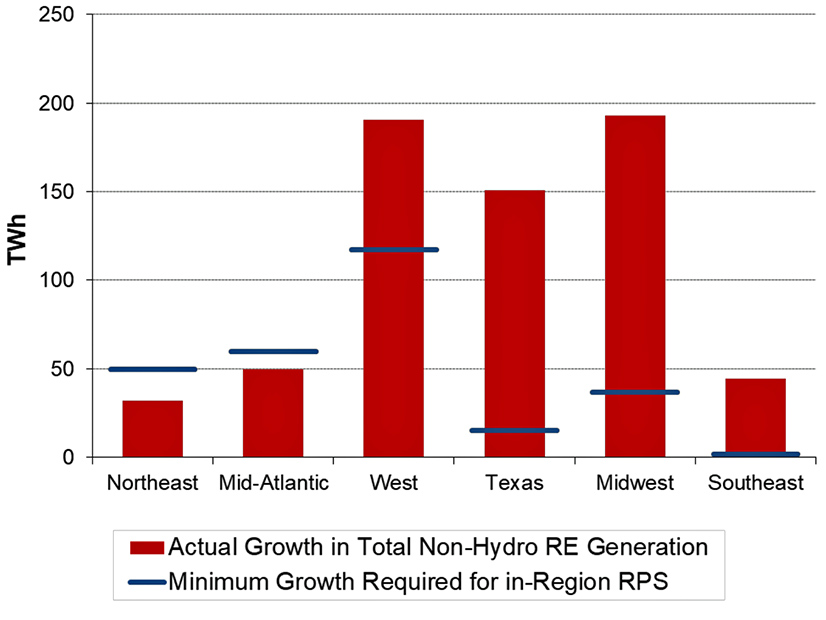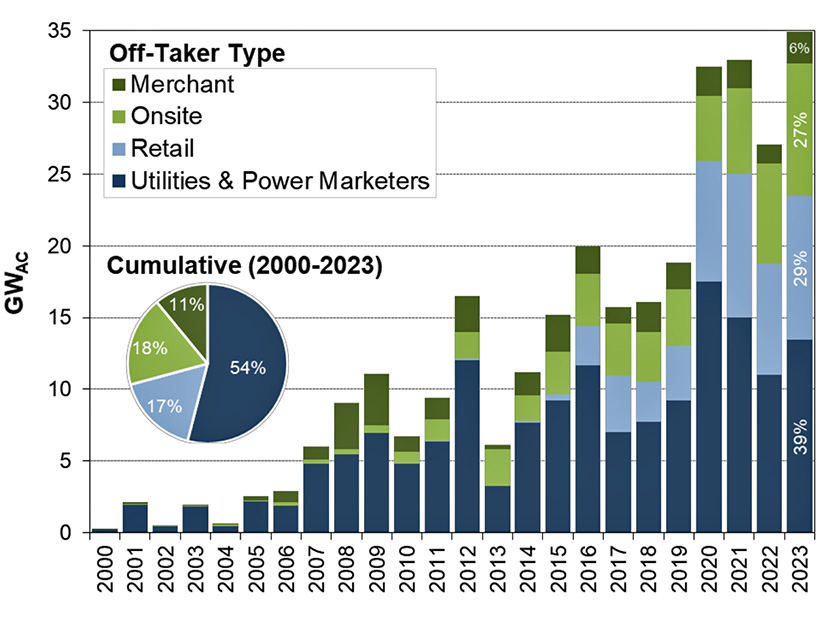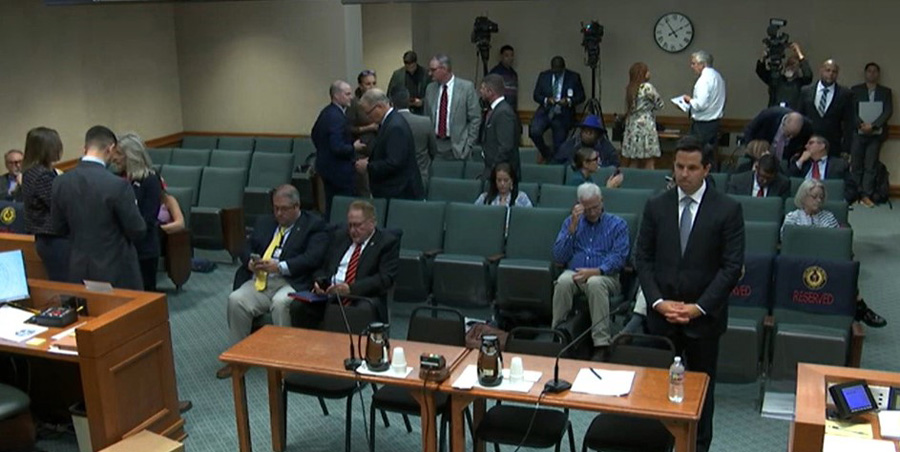As the variability of generation and demand increases on the New England grid, market enhancements may be needed to promote dispatchable resources, ISO-NE told stakeholders at its Planning Advisory Committee meeting Aug. 21.
“Current revenue structures may not adequately compensate resources for their value to the future grid,” said Patrick Boughan of ISO-NE, adding that the RTO plans to consider “the need for future market rule enhancements to support the ongoing reliability and economy of the region’s grid.”
“While the precise nature of these enhancements requires further exploration, they could include new ancillary services intended to incentivize the resource attributes that will become more important as the clean energy transition continues,” he added.
Curtailment likely will increase in the 2040s, reducing the value of new intermittent clean energy resources, ISO-NE found. An increasing amount of weather-based generation — coupled with increasing weather-based demand due to heating electrification — likely will make peak demand more variable.
“Since the grid must be ready to serve load under the most extreme conditions, significant quantities of dispatchable resources will sit idle during milder winters,” Boughan said.
As the renewables proliferate, the spring and fall seasons likely will be the first to decarbonize. By 2050, “almost all carbon emissions are concentrated in a handful of days in the winter,” Boughan added.
At the PAC meeting, ISO-NE presented results from the Economic Planning for the Clean Energy Transition draft report.
The study found that multiday storage will become particularly valuable with more renewables on the system, with 100-hour batteries becoming the most cost-effective way to reduce emissions by 2050. New solar resources are projected to be the least cost-effective.
Dispatchable resources like synthetic natural gas and small modular reactors also would provide significant winter reliability benefits and would reduce the need to overbuild wind, solar and storage, Boughan said.
“Eliminating carbon emissions through complete electrification of the heating and transportation sectors and a near-exclusive reliance on wind, solar and storage to generate electric power is possible but involves significant cost and unresolved reliability concerns,” Boughan said.
2050 Transmission Study
Building on the results of the 2050 Transmission Study, Reid Collins of ISO-NE presented more information about the RTO’s modeling of different offshore wind points of interconnection (POIs).
The original study and an additional consideration of different POIs modeled offshore wind during peak loads and at reduced outputs than nameplate capacity. (See ISO-NE Analysis Shows Benefits of Shifting OSW Interconnection Points.) Collins noted that several stakeholders requested that the RTO model offshore wind projects at full capacity.
Collins said the analysis is “intended to give a rough estimate of total offshore wind that may be plausibly installed on system without significant curtailment.”
When looking at individual POIs, ISO-NE found that 22 of the modeled interconnection points could handle an addition of 1,200 MW without upgrades. Just three POIs could go up to 2,000 MW without upgrades, while just one could go up to 2,400 MW. Some POIs would require minimal upgrades to reach these levels.
“Based on the expected 2033 transmission system, a significant amount of offshore wind may be able to be connected without major upgrades or significant curtailment across a variety of potential POIs in New England,” Collins said. He stressed the need for coordination between the states, transmission owners, project developers and ISO-NE to interconnect offshore wind projects efficiently.
More upgrades could be avoided if developers accept some degree of curtailment, or if projects are paired with storage or advanced transmission technologies to reduce curtailment, Collins said.
He said ISO-NE plans to publish more detailed results on this analysis in the fourth quarter of this year.
Asset Condition Projects
National Grid presented a pair of asset condition projects, with combined costs of about $120 million. The projects include:
-
-
- replacing components of the company’s Brayton Point Substation and relocating the transformers outside of the 100-year flood plain, with a projected cost of more than $40 million.
-
-
-
- a proposed refurbishment of a 345-kV line in central Massachusetts, with a projected cost of about $80 million.
-
Avangrid detailed a $218 million increase in the cost of an asset condition project in Connecticut that initially was proposed in 2018. The project initially was estimated to cost $180 million but now is projected to cost nearly $400 million. The company said the cost increase is due to price escalation and inflation, along with an order by the Connecticut Siting Council to change the route of the rebuild to minimize visual impacts.
Asset Condition Process Updates
Robin Lafayette of Rhode Island Energy gave an overview of the New England transmission owners’ work to improve the process for presenting asset condition projects to the PAC. The New England states have been pushing for more transparency and oversight into asset condition projects.
The PAC does not have the power to approve or reject projects, but instead is intended to provide stakeholders with information on projects and to solicit feedback on proposals.
Lafayette’s presentation focused on responding to feedback the TOs have received on the process updates, adding that the TOs will provide more detailed information on process updates in the fall.
He said the feedback has clarified the need for standardization in asset condition project presentations.
When assessing the health of transmission structures and equipment, “everyone is reporting on what appears to be a different grade scale,” Lafayette said. “What we’re proposing to do going forward is to all use the same rubric for structures, within the context of a PAC presentation.”
He said TOs also plan to standardize how they present their evaluations of alternative solutions, including advanced transmission technologies. He added that the TOs plan to review and discuss ISO-NE longer-term planning studies when developing asset condition projects, to provide stakeholders with information on potential overlaps.
A representative of the Connecticut Department of Energy and Environmental Protection said he’s “particularly interested in hearing more about how the TOs operationalize the feedback they have received.”
Sheila Keane of the New England States Committee on Electricity, which has been vocal in pushing for more transparency and guardrails around the process, praised the TOs’ responsiveness to stakeholder feedback. (See New England States Raise Alarm on Eversource Asset Condition Project.)
“What you’ve previewed sounds like it’s going in the right direction,” Keane said.


